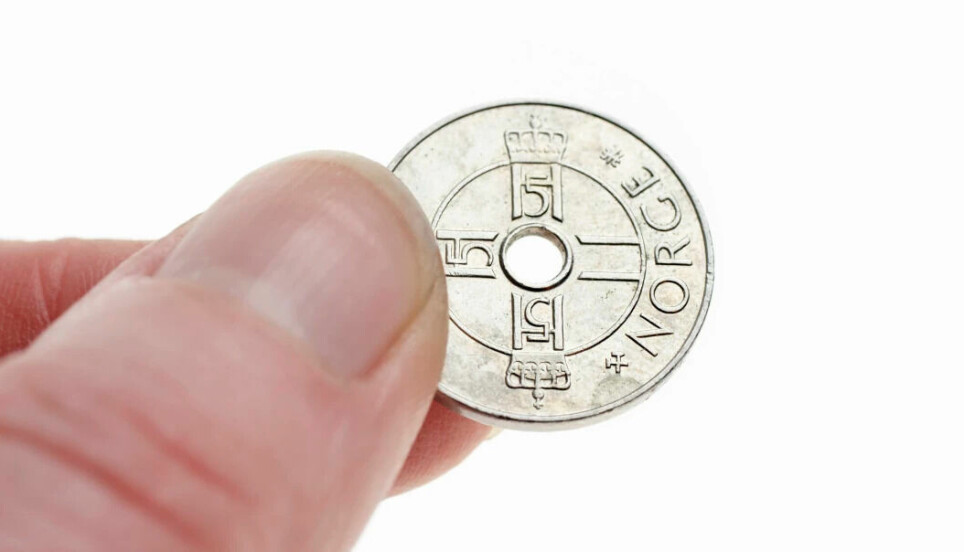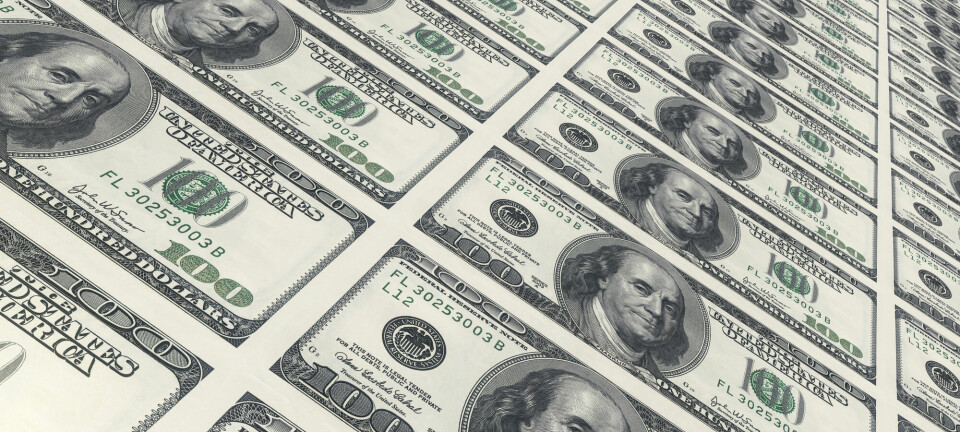
“High inflation leads to savings”
Inflation is at the highest it’s been in a long time. Does that mean we should stop paying off our loans and let inflation take care of it?
Once upon a time, the value of the coin used to pay for an item was equal to the value of the item purchased. That is, the value of what the coin itself cost to make. Soon the coin became just a symbol, where a bank set the value, and then it gradually became easier to use banknotes.
Now our money is becoming less and less valuable, and we need to have increasingly more of it to pay for goods at the store.
Gisle Natvik is a professor of economics at the Norwegian Business School (BI). He has a PhD in macroeconomics and monetary policy. We ask him about what inflation is, and what it means for us.
“Inflation is simple. When prices rise in terms of a specific currency, money becomes less valuable as a result. This is really not that complicated: The definition of inflation is price growth,” Natvik says.
Always on the rise?
But do prices always have to rise?
“No," Natvik states.
"For example, prices for cleaning services probably fell when the EU expanded. Many cleaners came to Norway. At that time there was probably negative price growth for that type of service. Products from China have decreased in price and typically become better and cheaper measured in Norwegian kroner over the past 20 years. There is no law of gravity that says everything must become more expensive. In Japan, they have struggled with deflation for 30 years,” he says.
When monetary value decreases, it is the result of price growth. This can vary. The price of oil rises and falls, while the price of milk always rises because the farmer pays increasingly more for production.
The consumer price index shows the price development for household goods, weighted according to different goods.
Then there is the producer price index, which measures the price development of goods that companies buy.
And finally the national inflation is the sum of the average for all goods, explains Natvik.
Difference between rich and poor
"In Norway, we have actually had very low inflation in the last ten years," says Natvik.
"So when prices rise only a little, we have low inflation. For companies, this depends on what they trade in, and there are differences among people too. If we divide people according to poor and rich, we can say that the poor spend a greater proportion of their money on necessities than the rich. So the poor will feel it more acutely when electricity and food become more expensive, while the rich notice when other goods become more expensive. Not everything rises equally. That is why we say that the value of the Norwegian krone does not decrease equally for everyone,” Natvik says.
But isn't it the same for everyone when we go to the bank and see the inflation figures in black and white?
“Then you have to remember that the monetary value is set to the average consumer price index and the growth in it,” he says.
Low growth and high inflation
Many say that growth must slow down for the sake of the environment. Does there always have to be growth?
“No, growth and inflation are not connected," Natvik says.
"Right now, we have low growth and high inflation, like in the 1970s. We will not know what is actually happening until we analyse the current situation in a few years. We became less productive during the pandemic and a lot closed down. A lot of capital was not used to produce. Instead of demanding the services that were gone, demand turned to goods. And then there was a price increase,” he says.
“Didn't we have low inflation during the pandemic?”
“In the beginning, yes, but this takes time. In addition, the politicians distributed a lot of money to companies instead of letting them go bankrupt, and also gave money to households. As a result, prices shot up. Some in the US experienced receiving more in benefits than they would have otherwise received from their salary. Interest rates were also lowered, although the textbook says they should really have been raised during a time of low productivity. Then we have Russia's war and an emerging trade war that deglobalises trade. The result is price growth and high inflation,” Natvik says.
So what about your mortgage?
In the past, inflation was very high. Starting from 1985, the rate of price increase has slowed, but "the price level in 2013 was still almost 35 times higher than 80 years earlier" according to the Great Norwegian Encyclopedia.
With that background, we asked Natvik if it would not be wiser for young people to let high inflation take care of the loan instead of exhausting themselves with high interest rates and large installments:
If you are young and loan NOK 4 million today and can afford to pay the interest, is there any point in paying the debt rather than letting inflation take care of the loan?
“Making payments on a loan or choosing not to do so and rather putting the money in the bank is quite similar. The concern is then about the difference in interest rates, and the usually higher interest rate on loans than deposits can therefore make it slightly more favourable to save by making payments. But if you have tight finances and are not really in a position to save right now, it may be wise not to pay installments when inflation rises,” Natvik confirms.
Inflation can eat your debt
He gives a simplified explanation:
If you have NOK 1 million in debt and inflation is zero and you want to pay off NOK 20,000 a year - then you must pay this in installments throughout the year.
With a 2 per cent inflation, however, it is sufficient to only pay the interest, because the real value then falls by 2 per cent, i.e., equal to NOK 20,000. So the value of your loan falls by 20 per cent in ten years.
“With high inflation, the real value of your loan falls while you pay the interest. This equates to savings, and the effect will be greater the higher the inflation is. In the 1980s, inflation ate away at our debt. It hasn't been like that in the last 25 years, but maybe we're on our way there now. But it's important to remember that interest rates would also increase, which is not painless,” Natvik says.
“It is tough to live in a world with 10 per cent inflation and 15 per cent interest rates. But by only paying interest, you are still aggressively saving, because the real value of your debt falls by 10 per cent every year. So yes, how much you should pay in installments depends on inflation.”
“But with high inflation and high interest rates, surely the value of the property falls?”
“No, there is no reason to believe that inflation in itself will cause properties to fall in value any more than bananas,” Natvik says.
———
Translated by Alette Bjordal Gjellesvik.
Read the Norwegian version of this article on forskning.no
------


































